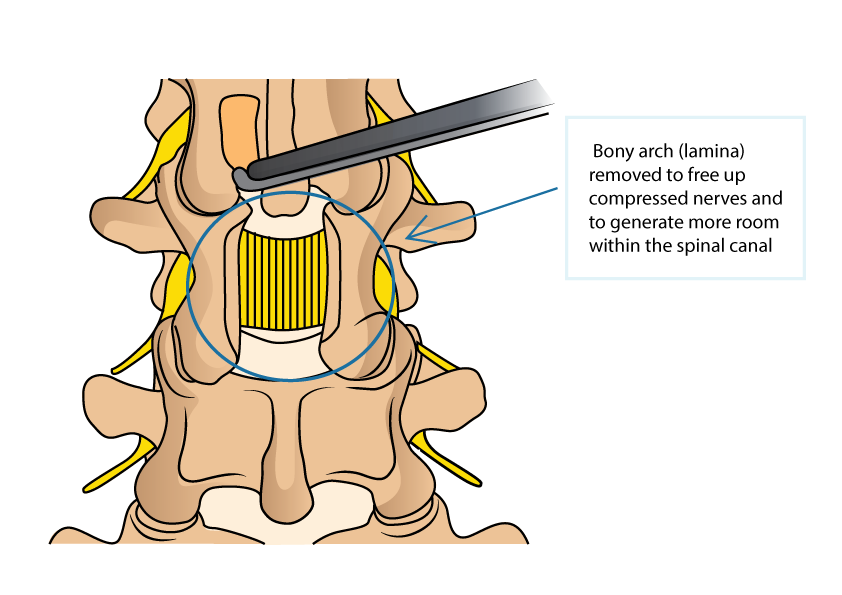Minimally Invasive Spinal Decompression (Laminectomy)
Lumbar decompression (Laminectomy) is done for patients with lumbar stenosis, which is a condition where spinal nerves are being compressed, usually from excess bone and ‘thickened’ ligament. The procedure is aimed at freeing the nerves from being compressed by generating more room within the spinal canal. The operation is performed under general anaesthetic. Incision is made in the midline of the back and the muscles are lifted off the bony arch (lamina). Using a burr or ultrasonic scalpel, bone is carefully removed (laminectomy), followed by removal of thickened ligament to gain entry into the spinal canal to free the nerves. Enlarged facet joints over the nerve roots may be trimmed to relieve the pressure on the nerves.In general improvement after lumbar decompression surgery is generally favourable. While the outcome of surgery can be variable since some people have more extensive disease than others, most patients can expect to regain improvement in their ability to perform normal daily activities and reduced levels of leg pain and discomfort. Relief from leg symptoms following decompression surgery usually occurs in approximately 70 – 80% of cases. This is not necessarily felt immediately, occasionally over several months.
The results are not nearly as reliable for the relief of lower back pain. Much of the back pain experienced comes from the damaged disc, arthritis of the facet joints and associated muscular spasms, therefore, decompression surgery cannot eliminate this and it should not be regarded as the main aim of the surgery.

Disclaimer
The medical conditions and treatments outlined on this website are of a general nature. Information given is not intended as specific medical advice pertaining to any given patient and should be seen as a broad guide only. You must not rely on the information provided on this website as an alternative to medical advice from your doctor or other health care professionals. If you have any specific questions about a medical condition, please consult your health care professional or contact Dr Lee’s rooms for a consultation and advice.


